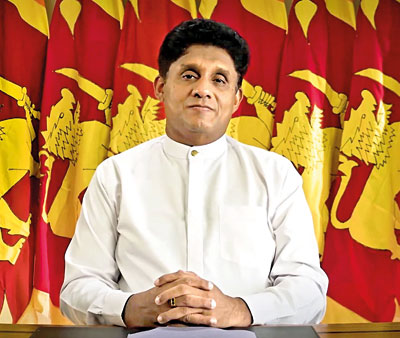Does Marketing Work for Politicians?
View(s): Does marketing work for Political campaigns? Do people know the difference between a political brand and a normal brand? Are politicians successful in making use of marketing techniques for their campaigns? Do people consider political brands and do they really get the benefit from political brands?
Does marketing work for Political campaigns? Do people know the difference between a political brand and a normal brand? Are politicians successful in making use of marketing techniques for their campaigns? Do people consider political brands and do they really get the benefit from political brands?
Given the colossal amount of money being spent on media, it’s worth asking the following questions;
- Does it make sense for politicians to spend so much money on advertising?
- How much money would have been spent on political marketing?
- Does it really affect the decisionof the voter?
- Why do politicians pay such a colossal amount of money on marketing?
- Are the techniques applied to marketing campaigns and branding of consumer brands the same?
The marketing fraternity of Sri Lanka is aware of the amount of money being spent on marketing campaigns. They are also aware of how the mechanism works. There is even a far better understanding of how political brands work and the difference between a political brand and a normal brand that is advertised in media.
It will be crucial for the non-marketing community to understand how branding, or more specifically, how advertising affects branding, functions. The main goal of advertising is to communicate. According to conventional thinking, communication starts with the sender and ends with the recipient. The S (Sender) and the R (Receiver) are separated by the medium. In contrast to the conventional or standard communication method, the receiver initiates the marketing communication process, wherein brand owners attempt to communicate with users or consumers. The users or consumers (receivers) can decode the message since it is
encoded in a certain way. Media is employed throughout the process to convey the message.
In marketing communications, 5 communication mix elements come into play to take this message to the consumer. The same applies to political campaigns too.
What are the marketing communication mix elements and how are they
applied in political campaigns?
- Advertising– This is about taking a message to a given target audience by an identified sponsor. In the case of a political campaign the identified sponsor is the political party or politician. This is the reason why it says, “This is a paid advertisement”. In other words, the media institute (TV or Radio Channel or the station) tries to say that it’s been paid by an identified sponsor. Ideally, this tag should be in all commercials, but it’s not used in non-political commercials.
- The second element of the marketing Communication mix is – Sales Promotions. This is about creating a short-term boost in sales by encouraging the consumer to buy the brand using giving away an immediate benefit. The focus of this is short-term. This is widely used in political campaigns where the voters are given free material, and free benefits just to get the vote. Giving away houses, bikes, rice packets, money, etc fall under this. This has no long-term benefit to the consumer. It’s only a short-term gain that is given to the consumer to induce trial. But as a consumer, you always have the option of continuing or leaving the brand after trying once if it’s not suitable for you. When this is applied in politics it’s really dangerous if the voter votes for the politician based on short-term benefits, which have no long-term value creation. Once the election is over, the voter will be forgotten and there will be no value created for the voter.
- The next element of the marketing communications mix is Personal Selling which is widely used in today’s context where salesmen/ women go from door-to-door selling their products and services. The best example is insurance. The same is used by politicians; going from door-to-door greeting and meeting the voter base in each area reminding them to vote.
- The fourth element of the marketing communications mix is Direct Marketing. It’s the process where the end consumer is directly targeted and personally addressed with a personalised message to convince the consumer that the brand knows the consumer better than anyone else. This technique is also used by political candidates, convincing voters that they can empathise better with the voters than other candidates. Hence, it’s a qualifier for the candidate to ask for votes.
- The last element of the marketing communications mix is PR (Public Relations). In this technique the prerequisite is to have a reason to talk about the brand. The brand has to give reasons for the consumers to talk about it. It’s obvious that the given reasons should be good reasons for consumers to talk well of the brand as in the absence of a positive reason people will talk ill of the brand. Applying this technique in political campaigns we can see how negative PR is created about the opponent. Rather than giving valid reasons to talk about the candidate in concern, the contrary is executed by giving reasons to hate the opponent. Sri Lankan political arena consists of more mudslinging than giving good reasons to believe in a particular candidate. In branding, if one brand keeps criticizing the other brand, the former gets out of the market before the latter. But in the game of politics, if one keeps criticizing the opponent, the latter will accumulate so much bad publicity and the one who criticizes the other would probably win the election
 |  |
 .
.
What are the core elements of brand -equity and brand-equity building?
As we believe in branding and marketing, to develop a brand, there are four key areas that a brand needs to pay attention to. These are also known as brand equity elements. Brand equity is defined as the differential effect that the brand can have on its consumers response to the brand or the value endowed upon a brand which reflects in the way consumer think, feel and act about the brand. Both definitions mention one common factor and it is; consumer reaction or attitude towards the brand. What are the key elements that control ones emotions towards a brand?
There are four key elements that are the best elements of Brand Equity. What are they:
- Brand Awareness – How far people know the brand or are familiar with the brand. David Aaker defines 6 levels of brand awareness;
- Brand recognition; the ability to identify the brand when it’s seen. In politics, when the politician’s face is seen, the voters can recognise him/her.
- Brand recall: the ability to recall the brand name when the category is given. In politics, when the name of the party is mentioned, who would they mention as the candidate from the party in their electorate? For preferential votes, three people should come to the mind of the person at the polling booth.
- Top-of-mind recall: When the category is given what’s the first brand that comes to one’s mind? When it says UNP, whose face comes to the minds of the voter, or when it says SLPP, whose face comes first, or when it says NPP whose face comes first, likewise for SJB whose face comes first.
- Brand Supremacy – When the category is given there’s only one brand that comes to the minds of the consumer. In the political arena, we call it ‘Block votes”. UNP is well-known for block votes. “kapuwath Kola” or Kapuwath Nil scenario is supremacy. Or in a particular party, there is only one person you can vote for, as the others are not so credible. This is mostly the case of up-and-coming parties and
- the minor parties.
- Knowledge of the brand – Consumer knows sensitive information about the brand.
Applying the same in the political context will help you understand this better;
Candidates need to make sure their name is known with their face by voters. That is brand awareness.
Brand Recognition – Can the voters identify the candidate when they see the face
Brand recall – Under the prevailing preferential votes system, it’s important for the candidate to make sure that s/he is recalled within the first three as there
are only three preferential votes allowed per voter.
Top of mind recall – That’s when a particular candidate’s name comes first among all the other names at the polling booth, as it’s important for them to lead the district or area they contest in.
Brand Supremacy – “I can only think of one person to vote for and I’m not sure if the others deserve my vote” is a statement you may have heard others say. It is known as “Brand Supremacy” in brand marketing.
Knowledge of the brand – When a voter has been loyal to a candidate for a long time, they will naturally have knowledge of and opinions about the particular politician. Therefore, no politician would squander time and money on the final two segments of his electorate. Rather, during the election season, s/he would try to focus more on memory and top-of-mind recall. Should these be three reasons, then those two are the main reasons why most candidates run media advertisements.
It is time to suggest an alternative method of assessing candidates because this will not be a sustainable approach to choosing parliamentarians. Under the media-driven reality system, anyone can present themselves as a modest, straightforward, or patriotic politician, but when it comes to actually delivering of duties and responsibilities as the leader of this country, they can be a pitiful failure. It is easy to replace a bad brand choice, such as toothpaste or soap, if it is a consumable product, but it is more challenging to remove a leader who is appointed for a five-year term. We require leaders who possess the mental capacity to manage several issues at once and who can
function under pressure to bring results.
HitAd.lk is the best and biggest mobile phone market in Sri Lanka, and we guarantee you will find what you need here from our extensive listing of mobile phones for sale in Sri Lanka. Whether it’s a budget-priced smartphone for communication, or higher end features with advanced connectivity, there are many different options from which to choose from on our site!


